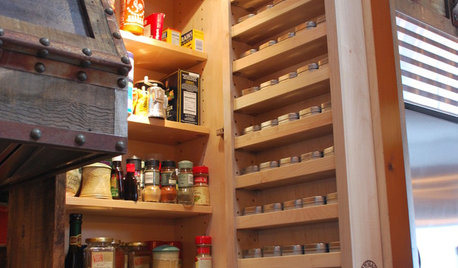Step by Step How to Guide for dummies?
cjra
14 years ago
Related Stories

BATHROOM WORKBOOKA Step-by-Step Guide to Designing Your Bathroom Vanity
Here are six decisions to make with your pro to get the best vanity layout, look and features for your needs
Full Story
FURNITUREThe (Baby Steps) Guide to Bold Upholstery
Gauge your comfort level with a dozen ideas for nudging your furniture beyond neutral
Full Story
BEDROOMS14 Steps to a Perfectly Polished Bedroom
Go from procrastination to gorgeous presentation with our bedroom decorating guide that covers all the details
Full Story
REMODELING GUIDESSo You Want to Build: 7 Steps to Creating a New Home
Get the house you envision — and even enjoy the process — by following this architect's guide to building a new home
Full Story
KIDS’ SPACES5 Steps to a Fun and Practical Kids’ Bedroom
There’s no need to overcomplicate decorating your little one’s bedroom — here’s a simple guide
Full Story
REMODELING GUIDESStep Up Your Split-Level Spec House
Three off-the-rack split-level homes, three dramatically different renovations. Let your favorite be your guide
Full Story
KITCHEN DESIGN3 Steps to Choosing Kitchen Finishes Wisely
Lost your way in the field of options for countertop and cabinet finishes? This advice will put your kitchen renovation back on track
Full Story
KITCHEN WORKBOOK8 Steps to Surviving a Kitchen Remodel
Living through a kitchen remodel isn’t always fun, but these steps will help you work around a kitchen in disarray
Full Story
DECORATING GUIDESRevive Your Room’s Look in Just 5 Steps
Not in total-makeover mode? Give your space polish and a pulled-together look with this easily doable plan
Full Story
KITCHEN DESIGN7 Steps to Pantry Perfection
Learn from one homeowner’s plan to reorganize her pantry for real life
Full Story





Kimmsr
maplerbirch
Related Professionals
Bellflower Landscape Architects & Landscape Designers · Elwood Landscape Architects & Landscape Designers · Garden City Landscape Architects & Landscape Designers · Tempe Landscape Contractors · Downey Landscape Contractors · Kaneohe Landscape Contractors · Medford Landscape Contractors · Oak Harbor Landscape Contractors · Pueblo West Landscape Contractors · Stallings Landscape Contractors · Harvey Swimming Pool Builders · South Riding Swimming Pool Builders · Chesterfield Fence Contractors · Oakdale Fence Contractors · Wilmette Fence Contractors